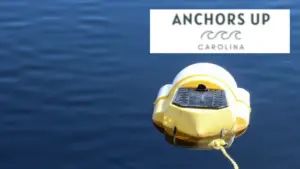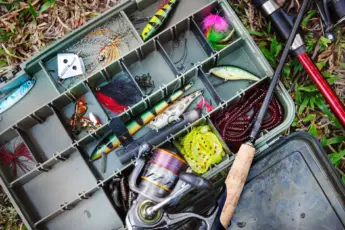Avid anglers who fish with live bait know that keeping the sea life swimming is critical. I have fished with live bait in rivers, creeks, lakes, and oceans and can attest to its effectiveness. However, weakened or dead bait does not perform equally as well. For this reason, it is necessary to find effective methods for storing and keeping bait alive. Comparatively, anglers use bait buckets with a pump, livewells on a boat, or floating bait buckets. However, bait buckets are unique as they are a long term solution for storing bait fish and crustaceans. Here is what you need to know about a floating bait bucket.
Comparing A Livewell Vs Bait Bucket Vs Floating Bait Bucket
Unquestionably there is a difference when comparing a livewell versus a bait bucket versus a floating bucket. I have used all three, but each serves a different purpose. Knowing the difference between the three is important.
Livewell
A livewell in comparison to floating buckets and bait buckets, is unique in the sense that they are most commonly found on boats.
Livewells function by injecting water via a seacock and pump from outside of the vessel into the bait well. For this reason, water flows in and out on a consistent basis. Livewells are effective in freshwater, saltwater, and brackish water environments.
In my opinion, the livewell is the best option for keeping baits alive and healthy over a short period of time. However, note this is not a long term solution. I don’t advise running your pump when you’re leaving the dock after a day of fishing and returning a day or weeks later. More often than not, the bait will be dead, or the battery will be drained.
Bait Bucket
Bait buckets are by far the least effective at keeping live bait kicking and healthy. Unfortunately, bait buckets are subject to a multitude of factors that deteriorate the condition of the bait.
Two of the most common issues with bait buckets are as follows. First, aerator pumps inject air bubbles into the bucket as a source of oxygen. However, if you’re not planning appropriately, the batteries die, and the pump shuts down, thus killing the bait.
The second most common issue is the bucket is subject to the elements with little to no insulation. For this reason, the water within the bucket is subject to temperature spikes or, conversely, temperature drops. Rapid changes in water temperature cause stress on the bait, thus weakening or killing the bait.
When I compare the bait bucket and livewell to the bait bucket, the major factor is the lack of water infusion. Remember, the livewell is injecting water directly from the body of water. Additionally, a bait bucket is resting in the body of water. With that being said, the temperature and oxygen levels remain consistent with floating buckets and livewells.
Floating Bait Bucket
Without question, a bait bucket is used for two different purposes. First, anglers load up the floating bucket for a single day of fishing. I often catch shrimp with a cast net before adding them to a floating bucket when casting from the shore. Alternatively, you have the option to purchase bait and transport it with a bait bucket and aerator before adding to the floating bucket.
The second and more common purpose for floating buckets is storing baits long term. Boat owners with a private dock or marina slips secure floating buckets directly to a fixed object.
Rather than purchasing or catching bait for each fishing trip, you can rely on dipping into the floating bucket supply.
Charter boat captains most frequently utilize floating buckets because they fish on a consistent basis. Storing bait saves time compared to finding and catching before each booked charter.
Why Live Baits Live Longer In A Floating Bait Bucket
It is important to understand how a floating bucket works, which is why it keeps baits alive longer.
Floating buckets come in a multitude of sizes to hold various types of baits, from flathead minnows to goggleyes. For this reason, you’ll want to size the bucket based on the bait.
To understand the function of a floating bucket, it is very simply a bucket with a lid and dozens of small holes. The holes allow for the movement of water into and out of the bucket. With that being said, oxygenated water constantly flows within to keep the baits alive.
Similarly, the holes act as a food source pathway. Undoubtedly the bait requires food when being stored for extended periods of time. Plankton and invertebrates flow in through the holes and nourish the bait stored within.
The combination of the two provides the best habitat for keeping live baits alive longer. Livewells work similarly, but again that requires the boat to remain in the water with the pump running.
Get A Floating Bait Bucket
If you’re an avid angler who stores a boat at a dock or marina, I suggest using a floating bait bucket. Again, remember to size it appropriately based on the size of the baits. Importantly, ensure that the bucket is well secured so that it does not come loose between current and winds. Lastly, it is not uncommon for people to steal bait from buckets. I suggest adding a zip tie on the lid to deter theft.







